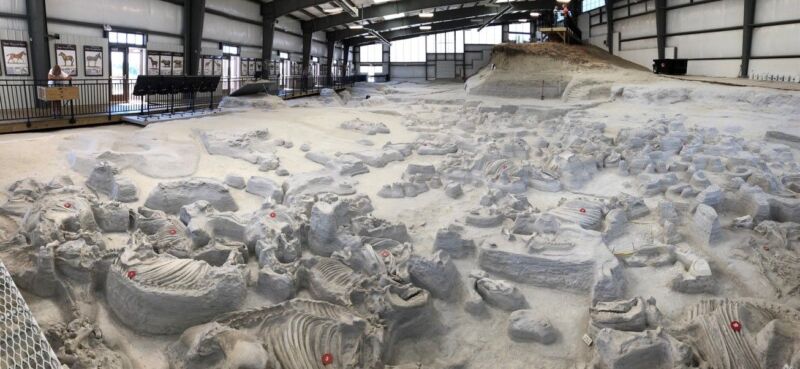
Enlarge / Interior view of the Rhino Barn. Exposed fossil skeletons left in-situ for research and public viewing. (credit: Rick E. Otto, University of Nebraska State Museum)
Death was everywhere. Animal corpses littered the landscape and were mired in the local waterhole as ash swept around everything in its path. For some, death happened quickly; for others, it was slow and painful.
This was the scene in the aftermath of a supervolcanic eruption in Idaho, approximately 1,600 kilometers (900 miles) away. It was an eruption so powerful that it obliterated the volcano itself, leaving a crater 80 kilometers (50 miles) wide and spewing clouds of ash that the wind carried over long distances, killing almost everything that inhaled it. This was particularly true here, in this location in Nebraska, where animals large and small succumbed to the eruption’s deadly emissions.
Eventually, all traces of this horrific event were buried; life continued, evolved, and changed. That's why, millions of years later in the summer of 1971, Michael Voorhies was able to enjoy another delightful day of exploring.
Read 43 remaining paragraphs | Comments
source https://arstechnica.com/?p=2035079




0 comments:
Post a Comment